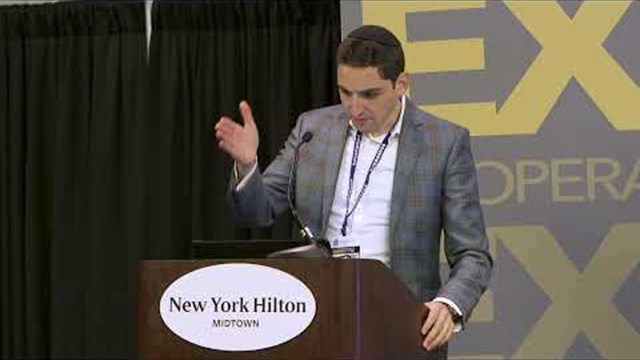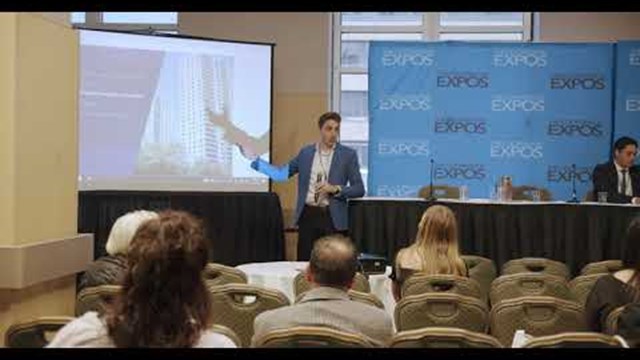
Sometimes the future seems like it’s an awfully long way away. If a roof is going to last 30 years, why should we worry about it today? Same with that shiny new boiler or that flat, crack-free pavement just poured two summers ago. Eventually, though, everything new grows old. Wear and tear sets in and soon, those elements we thought would last forever need to be repaired and replaced.
How much should your community have socked away? That is where a reserve study, or sometimes what’s called a capital needs assessment in New York City, comes in handy—very handy, in fact, because it means the co-op or condo community has been setting aside savings for years in order to pay for those replacements and repairs.
While reserve studies are more common in other parts of the tri-state area, they were not always popular in Manhattan, says leading reserve study specialist Mitch Frumkin, PE, RS, CGP, president and founder of Kipcon, a full-service engineering firm headquartered in North Brunswick, New Jersey. “In Manhattan, people were forever steered away from reserve studies because it was putting an obligation on buildings to set aside money.”
Capital Needs Assessments
That changed dramatically when the number of mortgages in the city backed by Fannie Mae, Freddie Mac and the Federal Housing Administration (FHA) began to grow. “Five or six years ago, they only represented five percent of mortgages,” says Frumkin. “Today, 75 percent of condo mortgages are guaranteed by FHA, Fannie Mae and Freddie Mac.”
This tilted the scale in favor of reserve studies because “they have regulations for insuring mortgages and in order for it to be guaranteed, there are certain requirements that have to be met,” Frumkin says. One of those requirements is that ten percent of the budget must be set aside on an annual basis for future repairs, or the board must do a reserve study that shows they can afford to put aside less.
“In a high rise, you can have a $7 million budget, and ten percent of that is $700,000” so that is what must be set aside each year, says Frumkin. If a reserve study is done, though, analyzing exactly what replacements and repairs must be made in the years to come and how much needs to be saved to pay for them, the number will likely be significantly less. “You can pay $15,000 for a reserve study and spend hundreds of thousands of dollars less,” Frumkin says.
Traditionally, buildings in New York City have done capital needs assessments rather than reserve studies, says Frumkin. A capital needs assessment is more short term. “It says ‘in the next five years, these will be your capital needs,’” Frumkin explains. They may need a roof replaced at the end of those five years but it does not involve making long-term budget plans the way a reserve study does.
With a reserve study, if a roof costs $100,000 to replace, the building will have been putting aside $5,000 a year for the last 20 years to pay for it. A capital needs assessment is “not a good financial tool to establish a funding plan,” says Frumkin.
How Does it Work?
Reserve studies are usually performed by engineers or architects who have earned specialized designations known as Reserve Specialists (RS). These specialists examine the condition of the common elements such as the building’s exterior including the roof, façade, sidewalk, roadways, storm water drainage and more. After evaluating the building or association, the reserve expert will prepare a report including a 30-year expenditure page that shows prospective costs for each year. On average, it takes about 60 days to have a reserve study performed. Studies can be updated every three to five years.
These specialists “examine the condition of the common elements,” says Lynn Voorhees, RS, RCS, director of community association services for D.W. Smith Associates LLC, based in Farmingdale, New Jersey. For example, experts will look at the building’s exterior including the roof, façade, sidewalk, roadways, storm water drainage components and more.
In order to estimate the cost and timeline factors for the study, the expert looks at the typical standards for the expected life of an element—pavement, for example, may typically last 20 years. The engineer will then also look at the condition of that pavement—whether there is gravel coming out of it or whether there are cracks. “That’s how we determine how many years it has left,” says Voorhees. It is the condition of the element versus how many years are expected from it that tells the tale.
After evaluating the various parts of the building, the reserve expert will create a report that shows the prospective costs for each year. “It shows what’s due the next year and the year after that,” says Voorhees. On average, it takes 60 working days to produce a reserve study, she adds, but it can be done more quickly if necessary.
Studies are typically updated on a regular basis. “In a new association or community, you can do updates every three to five years,” says Voorhees. “As the community ages, you need to update them more frequently to ensure accuracy in pricing and to know that you’ll have the money there when you need it.”
In order to best accommodate the individual needs of each building evaluated, the firm conducting the reserve study “will try to phase the projects over a couple of years,” says Voorhees. Still, though, some buildings may find themselves underfunded, which means they may need to turn to an assessment – never a popular action – or alternative methods of financing, such as a bank loan.
Paying Wisely
Planning is everything when it comes to the successful maintenance and upkeep of a condo or co-op building. The number one mistake people make in these situations “is that they don’t do reserve studies,” says Frumkin. “Even if you don’t set aside the money, you’ll still need to replace the element. It’s not going to wait for you to get the money. In Manhattan, managers and attorneys have a responsibility to understand this and communicate it so they aren’t faced with an assessment.”
Reserve funding also benefits from planning for those parts of a repair project that are unforeseen, says Jeffrey Roude, a partner with the accounting firm of SaxBST with offices in New York and New Jersey. Problems can arise “when you don’t put in contingency for a project,” he says. “There’s always some unforeseen additional repair.” He gives the example of a boiler replacement that also then requires some new piping. It is beneficial to add 15 to 20 percent to these budgets just to cover those unexpected costs.
For those buildings that either were not putting money away or that ran into unexpected circumstances that set them back in their saving, there are options for rebounding and still ensuring that repairs are made. That said, some may be more palatable than others to residents.
If the money is not there to do the renovations, there are basically three choices. “Borrow the money, delay repairs, which is not a good idea, or assess the shareholders,” says Roude.
Assessments are never a popular idea, which means borrowing quickly jumps to the top of the options list. “A lot of co-ops have refinanced mortgages and taken out extra money in anticipation of work that will need to be done so they have that reserve,” Roude says. Some buildings had high-rate mortgages so when they refinanced, they kept their payments the same but took out extra cash. “The cash flow stays the same, but now they have a reserve,” says Roude.
Other co-ops and condos may turn to lines of credit to supplement their reserves. Roude cites a building in Queens that refinanced two years ago and took out money for repairs as well as a line of credit. After doing their reserve study, they realized they still did not have enough, so they doubled the line of credit and issued an assessment. Because they borrowed for the roof work that needed to be done, though, they were able to assess the shareholders over three years and not bombard them with one overwhelming amount. “It will cost us some interest over the years,” but it solved the problem, Roude says. And for the residents and the assessment, “at least it’s not hitting them all at once. They can ease into it over three years and adjust their cash flow. In the meantime, the building gets to do the work now.”
Making sure there will be enough money on hand when the rainy day comes is of paramount importance for boards, managers and residents.
“The board should constantly be reviewing the funds with their managing agents or accountants so they’re not caught by surprise when these repairs come up,” says Roude. “With all of these local laws (such as Local Law 11 that governs façade inspections and updates) and with buildings getting older, these repairs have to be made.”
For boards who find themselves behind in their savings efforts, it is never too late to start. “It’s different for every association but there are different ways to get to where you need to be,” says Frumkin. “If you’re underfunded, you can change how much you’re putting aside.” And boards and managers also can enlist the talents of industry experts who have experience in reserve studies and solid, prudent planning. “There are ways to get there if you work with someone who understands the different types of plans,” says Frumkin.
As difficult as it may be to set aside extra funds or as intimidating as it may be to inform a building’s residents that cash must be raised and saved, these alternatives still come out way ahead of finding out too late that there is no cash, no resources and few options for replacing a leaky roof during a rainy spring or a broken-down boiler in the dead of winter.
As with everything in life, thinking ahead can help alleviate stress and put management in the driver’s seat for a safe, well-funded and well-planned future—an approach every resident and shareholder certainly can endorse.
Liz Lent is a freelance writer and a regular contributor to The Cooperator.









Leave a Comment